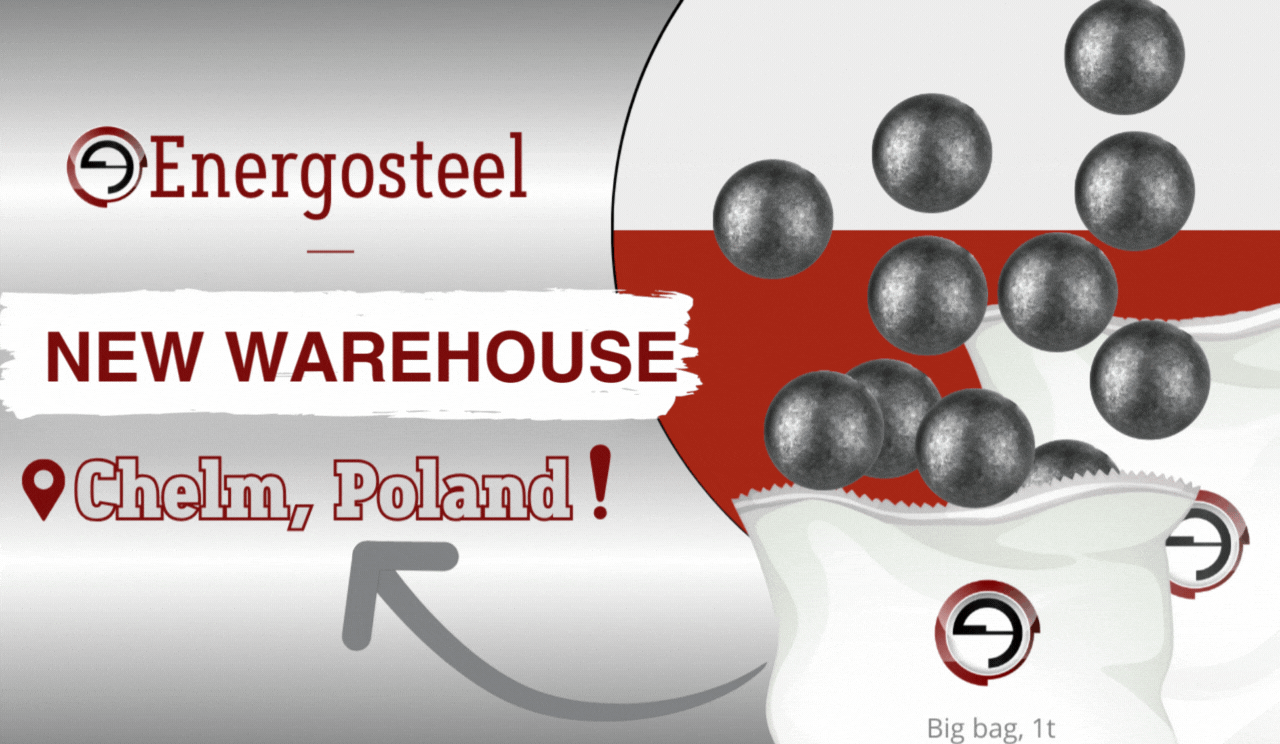The operating principle of the ball mill consists of following steps. In a continuously operating ball mill, feed material fed through the central hole one of the caps into the drum and moves therealong, being exposed by grinding media. The material grinding occurs during impact falling grinding balls and abrasion the particles between the balls. Then, discharge of ground material performed through the central hole in the discharge cap or through the grid (mills with center unloading the milled product and mills with unloading the milled product through the grid).
In filling mill by grinding balls on 40 – 50% and non-smooth liner, the outer layers slip is virtually absent, but the sliding of the inner layers one on another observed in various modes of operation mill. In a monolayer filling mill by grinding media, they rotate around their axis parallel to the drum axis of rotation. Grinding media are not subjected to a circular motion by a smooth lining, even at high speeds. In a multilayer filling mill by grinding media, depending on the rotational speed, there is possible one of the following modes the grinding media motion:
- Cascade mode motion – speed mode with a rolling of grinding balls, but without they flight
- Mixed mode motion – speed mode with a partial rolling and a partial flight of grinding balls
- Waterfall mode motion – speed mode with flying of grinding balls.

Picture 1. Grinding bodies in cascade (a), mixed (b) and waterfall (c) mill operation modes
Cascade mode motion of grinding balls carried out at low drum speed. At start-up of a mill, the grinding material rotated by a certain angle and grinding balls start to move by closed path. The curved surface of natural slope is close to the plane inclined at some angle to the horizontal. This angle is equal to a limit angle of rotation. In this mode, the ground material remains in this position, but the grinding balls continuously circulate, rise on circular trajectory and “cascade” roll to the reference point. There is a zone or “core” in the central trajectory of the grinding material. This zone is inactive. In cascade mode grinding occurs as a result of crushing and abrasive actions by grinding balls. This mode used in the ball mill with a central discharge.
In mixed mode motion of grinding balls participate balls positioned between the outer layers and inactive “core”. The circulation of grinding balls occurs around an inactive “core”.
Waterfall mode motion of grinding media in the mill carried out by the drum rotation speed, ensures the transfer all of the grinding balls layers from a circular to a parabolic trajectory. In this mode, grinding balls rise on circular trajectory and at certain points deviate from it and make a free flight by a parabolic curve.
Weight of grinding balls should be sufficient to grind the largest pieces of crushed material. For efficient operation of ball mills necessary to observe the right balance between balls size and feed material size. If the feed material contains many large lumps and grinding balls can’t crush them, it leads to a gradual accumulation them between the balls. As a result, mill suspends own operation. In these cases, need to reduce the size of crushed material or increase the size of the balls. By increasing the grinding balls size, decreases the mill working surface and reduced mill productivity. It is important to follow the degree of drum filling by grinding balls, because with a large filling rising grinding balls collide with falling balls.
Established impact of design mills and lining forms on their productivity. Mills operating with low pulp level, have better productivity than mills with high pulp level. Particularly, productivity of mills with unloading the milled product through the grid approximately 15% higher productivity mills with center unloading the milled product. Productivity mills with smooth lining less than productivity mills with ribbed liner. Mill productivity also depends on other factors: number of the drum rotations, the grinding fineness, humidity and size of the crushed material, timely removal the finished product.
Ball mills characterized by high energy consumption. When the mill idles, the energy consumption is approximately equal to the energy consumption with full mill capacity. Therefore, the work of the mill with partial load conditions is unprofitable. Energy consumption for ball mills is a function of many factors: the physical properties of the ground material – its specific gravity and hardness; the degree of drum filling by grinding balls; the number of drum rotations, etc. Ball mills have low efficiency – no more than 15%. Energy is mainly consumed on the wear of grinding balls and mill housing, friction; heating the material etc.
The advantages of ball mill there are large unit capacity, achievement degree of fineness corresponding to a specific surface of 5000 cm2 / g, simple construction, high reliability and well designed scientific justification.
The disadvantages of ball mills include their considerable metal consumption and deterioration grinding media, as well as a lot of noise. Most of the energy useless lost during ball mill operation, leading to low it efficiency. But even a significant specific energy consumption for grinding material compensates beneficial effect by using mill. This does not exclude a search energy saving solutions for milling, and this handled by experts from around the world.







